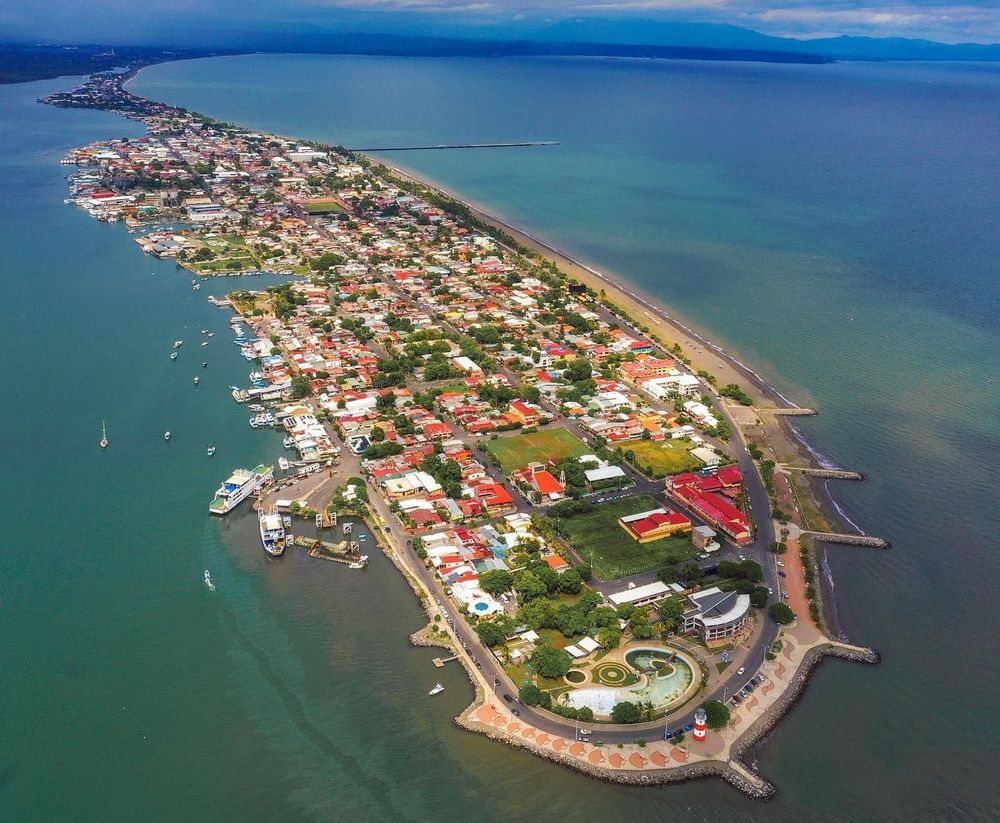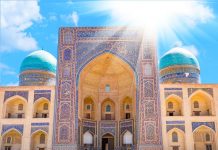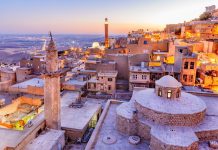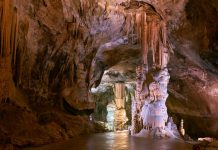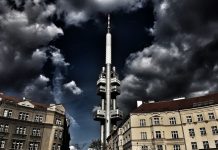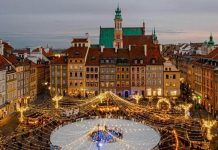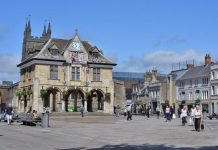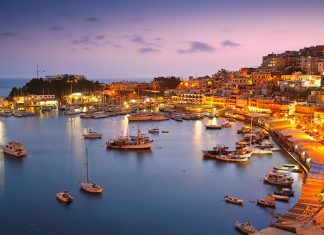The Puntarenas tourist area and the Golfo Islands comprise 1517 sq. miles and 264 miles of coast line. Part of the area’s boundaries is undefined since a part of the Nicoya Peninsula, as well as the city of Puntarenas, fall within this area. The shoreline of both tourism areas is joined by maritime transport. The area extends from Punta Conejo south to Puerto caldera where the mouth of the Bongo River is located.
Puntarenas is one of the most important tourism regions in Costa Rica. Its coastline is full of islands, inlets, beaches, and very beautiful natural treasures, all which make it an excellent tourist destination. There is a multitude of attractions based around the beaches, as well as protected areas, both land based and around its islands. The area’s center is located at Puntarenas which acts as a place for lodging, distribution, port of call, and excursions. Within its tourism locales you can find a variety of hotels and traditional cabins close to the ocean as well as all-inclusive lodging facilities.
This spectacular area is very close to the Central Valley, around two hours by car and 74 miles from the capital.
The peninsula area has very important areas geared toward tourism like, Tambor, Santa Teresa, and Montezuma, all with very beautiful natural areas, specifically its beach areas. You can also find the Cabo Blanco Absolute Nature Reserve, San Lucas, Chira, Tortuga, and Coco Islands.
The Monteverde area, located north of Puntarenas, has both national and international significance because of its conservation efforts and life style centered around nature. Santa Elena is the hub for commercial services and tourism-based businesses. Other important communities are San Luis and Gerardo.
The primary attraction is the Monteverde Biological Reserve, however there are many other nature sites, picturesque trails, hanging bridges, as well as butterfly and frog exhibits.
Tourist Attractions
PASEO DE LOS TURISTAS (TOURIST WALK)
This stretch is located along the main beach in Puntarenas and is one of the most heavily visited places because of its variety of high-quality services for tourists. It runs from the Marino del Pacífico (located by the historic train station) to La Punta. Around the cruise ship pier there are many little kiosks, and places to purchase local arts and crafts as well as traditional fruit salad and frozen drinks known as “Churchills.” Along this stretch, there are other services provided for tourists like sport fields, park areas, showers, restrooms, and everything else you need to enjoy the beach.
MARINO DEL PACÍFICO PARK
This park was established in 2002 and is located where the historic train station is. It is open to the public from 9 a.m. to 5 p.m. Its main attraction is the fish aquariums where you can see species native to the Pacific Ocean, as well Cocos Island. There is also a restaurant and a souvenir shop.
HISTORIC MARINE MUSEUM
This museum is located in the historic Puntarenas barracks, which was restored in order to accommodate the Culture Museum, an amphitheater, and a public library. The first of these is used to exhibit monthly paintings and sculptures. The amphitheater has theater, dance, and music performances.
The archeological information provided explains the original settlements of indigenous groups from the area, how they got their food, took advantage of the surrounding natural resources, burial practices, and trading practices that they developed.
The historic information centers on the city of Puntarenas, because the province is made up of the Northern, Central, and Southern Pacific area of Costa Rica, with the latter of the three having shown significantly more growth and independence than the rest of the province.
The exhibit shows how the port area became one of the most important in the country, conserving the religious traditions and celebrations of Puntarenas, characterized by its diverse geographic and cultural origins.
The museum also shows the diversity of natural resources in the area, such as wetlands, forests, marine areas, land animals, and birds.
It explains the importance of the Nicoya Gulf and the islands found within it.
It also goes into the natural wealth of Cocos Island, as well as its treasures and pirates.
Museum hours are Tuesday to Sunday, from 9:45 a.m. to 5:15 p.m.
In the same area, are the Sagrado Corazón de Jesús and the Puntarenas Cathedral, which was built in 1902.
“PURA VIDA” GARDEN AND WATERFALLS
This extremely beautiful area is located in Bijagual de Turrubares and can be reached by taking the turn off located on the left, after entering the Carara National Park. The waterfall is one of the highest in the country, reaching some 650 ft. There are also colorful gardens, trails, and pools for swimming in this area.
VENADO ISLAND
This island covers 968 acres and stands out among the other islands in the Nicoya Gulf because of its green ocean water. The inhabitants of the islands are farmers and fishermen. There are an abundance of marine birds that nest on the island or in the mangroves around the Jicaral estuary.
PAN DE AZÚCAR ISLAND
This little island is located south east of the San Lucas Island. Its ocean scenery is beautiful and is centered on its rock formation because of its shape, from which the name comes. There is a large population of marine birds, particularly brown pelicans.
MUERTOS ISLAND (GITANA)
Many years ago, there was a cemetery here, hence the name (the dead in English). It is also known as Gitana. The majority of its small land mass (some 60 acres) is covered by dry tropical forest, which is transitioning to a wet forest. Many marine birds come to the area and the surrounding scenery is lovely.
JESUSITA ISLAND
This island is located northeast of Cedros Island, which is very close by. Its 60 some acre land mass is made up of dry tropical forest, which is transitioning to a wet forest. Northeast of the island is a rocky coast and a beautiful beach. There is also another beach in the southern part.
CHIRA ISLAND
This is the biggest and most populated island in the Nicoya Gulf (25 sq. miles). It also offers the largest number of services, including elementary schools and a high school. There is a big mangrove on the northeast side of the island. There is an eco-tourism area run by women from the island. Here they offer basic lodging, food, and tours for fishing and exploring the mangrove.
CEDROS ISLAND
This island covers less than 400 acres and has a very beautiful landscape due to its irregular shoreline. There are two main beaches: Langosta and Gringo. There are forests with small trees, coconut trees, and plants. There are organized tours to this island.
CABALLO ISLAND
This long island is less than 2 sq. miles. The Peter Harley Canal separates the Bejuco Island from this small isolated land mass, which is rich in trees and is surrounded by coral reefs and cliffs. Toward the center are the highest elevations of the island, which measure less than 650 ft. above sea level.
BEJUCO ISLAND
This island measures less land mass than Caballo Island, but is similar in its long shape and has a maximum elevation of 400 ft. above sea level. There is an irregular surface with an abundance of tree species.
VIRGEN DEL MAR FESTIVAL
Every 16th of July, colorfully decorated boats are created to remember the event many years ago when a group of fisherman, shipwrecked and nearly dead, were rescued shortly after calling on the Virgin Mary. During the festival, you can participate in many different kinds of water sport competitions, as well as other recreational activities for children and adults. It is also celebrated in Quepos.
PUNTARENAS ESTUARY
This estuary is located in the Nicoya Gulf and covers some 5 miles. Its irregular shoreline is home to beautiful mangroves where many types of birds come to nest. This mangrove is part of the Wildlife Refuge. Throughout the estuary, due to its calm waters, there are all kinds of fishing boats, sail boats, and tour yachts, which give the maritime area a special appeal. It is also a good area for water skiing.
MATA LIMON ESTUARY
The waters here are used for jet skiing and water skiing. There are also some good areas for fishing. The Puerto de Caldera is nearby.
JESÚS MARÍA ESTUARY
This estuary is good for fishing and has a variety of flora and fauna. There are also many colorful birds that are easy to see.
TOWN OF COBANO
Cobano, located 518 ft. above sea level, has many commercial services and tourism businesses that offer lodging, food, and tours, among other things. It is a starting point for many interesting tourist attractions like Montezuma, Cabo Blanco Reserve, and Malpaís.
OROTINA
Orotina is a well laid out city with parks, a church, and many different types of commercial businesses such as the local market, where they sell local food and drinks. It is 751 ft. above sea level and a hot dry climate, which makes it good for fruit production, many of which are exported to the United States and Europe.
The last few years have seen significant urban growth with many colorful kiosks selling fruit along the highway that connect Jacó and Manuel Antonio.
ESPARZA
Esparza is a historic city that was sacked various times by English pirates. It is the oldest city in the country that has never changed locations. There are many historic buildings such as the Esparza Church and the Torres Elementary School.
There are many services provided for tourists. It is a “must stop” to try the local dishes.
PUNTARENAS
The city or port of Puntarenas is about 13 ft. above sea level with many wide open beaches to enjoy the sun and the ocean. Historically, it has been a recreation spot for national tourists. It provides many high quality tourism services that bring in international tourists.
Presently, there is a cruise ship port in the newly remodeled Muelle de Puntarenas, with many docks and moors, which are the departure sites for the ferry service to tourist destinations like Paquera and Cóbano, as well as islands and mangroves located in the Puntarenas Estuary.
Land transportation services to Miramar and neighboring communities of Montes de Oro and Santa Elena de Monteverde depart from here.
Puntarenas has rest stop areas where you can try local dishes and drinks. Much of the local cuisine comes from the ocean like the popular local ceviche in restaurants and hotels.
There are other buildings of interest and historical sites.
MIRAMAR AND MONTES DE ORO
Miramar is a historical city known mainly for its gold mining. Nowadays the cities are developed mainly around farming and also growing tourism attraction, especially in the mountains where small towns like Cedral and Zapotal have great landscape views of the gulf.
MONTEZUMA WATERFALL
To get there, you must walk 20 minutes outside of the city. The fall is some 65 ft. high and a refreshing pool surrounded by lush vegetation.
COCALITO WATERFALL
This refreshing waterfall is located on the far northeast end of Playa Cocalito. It is 40 ft. high with a pool at the bottom for swimming and taking in the surrounding beauty like the lush vegetation and blue ocean. This is a very scenic and relaxing place.
PUNTARENAS FESTIVALS
Parades, concerts on the beach, and many other recreational activities create the perfect environment to join in and share the culture of the people from Puntarenas. These festivals are scheduled during February, when the weather is dry and ideal for enjoying the beach and all the events scheduled during those days.
BARRANCA RIVER MOUTH
This place is popular among surfers for its long left bending waves, one of the most famous in the world. It is also a great place for hiking and observing the ocean view.
TÁRCOLES RIVER
This river is 387 ft. long and on its lower riverbed, particularly around the coastal highway, you can observe crocodiles. There are tours that go along the river to observe these large reptiles.
PLAYA TIVIVES
This beach is located some 5 miles past Puerto Caldera, along the unpaved road. There are strong waves here and is popular among surf enthusiasts. There is a large mangrove and its long beach is ideal for walking, horseback riding, and sunbathing.
PLAYA TAMBOR
This beach is located in Ballena Bay, with Playa Pochote at the far northeast end. It is a very beautiful and long beach and is great for swimming, hiking, horseback riding, and water sports. This bay has a special feature, which at its two far ends is the profile of two lizards. The area also possesses coastal vegetation and many types of tourism services, from cheap lodging areas to all-inclusive luxury hotels. There are all types of activities like golf, sport fishing, diving tours, water sports, horseback riding, mountain biking, and others.
PLAYA QUIZALES
This is a very beautiful scenic beach and to the far north is a cliff which offers a great view of the coastline.
PUNTARENAS BEACHES
These beaches extend all along the coast in Puntarenas, from the mouth of the Barranca River to the area known as La Punta, where the stretch ends. The area from the pier (cruise line harbors) to La Punta is used by swimmers with the Tourist Walk running parallel to it, which have a number of hotels, restaurants, bars, and other services. Besides swimming, you can participate in other sports and ocean activities like boat rides.
COCAL, COCALITO AND QUIZALES BEACHES
These beaches are located in a very scenic part of the coastal area, where sandy beaches are mixed with rocky areas and cliffs, all surrounded by lush tropical vegetation. Playa Cocal is wide open and suitable for swimming, sunbathing, hiking, and horseback riding. North of Cocal is La Punta Balvina, which once boarded Playa Cocalito. This beach is wide and rocky and is outlined by high cliffs.
CALDERA AND MATA DE LIMON BEACHES
This beach extends from the Mata de Limon Estuary to the hill known as Roca Carballo. It is very popular, especially among national tourists that enjoy this area, as well as the area around Puerto de Caldera, where large ships dock. The estuary can be traveled by boat in order to enjoy the flora and the fauna of the mangrove.
PLAYA SANTA TERESA
This beach is very long with favorable waves for surfing. It is full of coastal vegetation. There are beautiful rock formations on the north end known as Peñon de Ario. From Playa Santa Teresa looking south, you can see the Cabo Blanco Absolute Nature Reserve. Besides sunbathing and swimming, the beach is also good for hiking, horseback riding, as well as mountain biking and camping.
PLAYA POGERES
This beach is a small and beautiful inlet and is great for swimming and taking in the surrounding maritime scenery. Many fishing boats anchor here.
PLAYA POCHOTE
South of Manzanillo is Punta Ponchete, which is a rocky little inlet with lush vegetation and great scenic views. It is great for hiking, enjoying the ocean, sunbathing, and other activities.
PLAYA ORGANOS
This beach is located some 2 miles from Paquera. It is a little less than one mile and has an estuary (Óganos) and a mangrove on the northern end. It is very popular among locals from the surrounding areas. It has beautiful scenery and from its shoreline you can see the Negritos and Tortugas Islands.
PLAYA NARANJO
This long beach is located 7 miles from the administration office of Santa Rosa National Park. At the northern end is a patch of dark sand surrounded by ocean waters and the mouths of the rivers that from a large estuary and a mangrove rich in plant and animal species. It is ideal for hiking and taking in the magnificent panorama that includes La Peña de la Bruja (Witch’s Rock), a little rocky island that is popular among surfers. Camping is also permitted on this beach.
PLAYA MONTEZUMA
This very beautiful coast is made up of a mix of rocky areas and white sand beaches. There is an abundance of vegetation that is home to numerous animal species like the howler monkeys, as well as a number of birds. The center beach of Montezuma is a small beautiful inlet. North of this area is the main beach, which runs a few hundred feet toward the rocky area, where a path begins that connects to other beaches like Cocal.
PLAYA MALPAÍS
This beach has a very irregular rocky shoreline. There are areas of great natural beauty due to the fact that not only is there coastal vegetation along the shore, but there are also nearby forest areas. In the central part of the beach is La Punta Barrigona, which is a good place for hiking and taking in the surrounding ocean view. On the far southern end of Malpaís is La Punta Cuevas, an equally beautiful area that is part of the Cabo Blanco Absolute Nature Reserve. At this beach, you can do activities such as surfing, horseback riding, diving, sport fishing, mountain biking, kayaking, and watching the sunset, etc.
PLAYA GIGANTE
This is a small beach surrounded by mountainous hillsides with lush vegetation. The waves are small and from its shoreline looking south, you can see La Isla Muertos a short distance away. There are very pleasant conditions for relaxing and hiking or horseback riding to nearby areas to observe the flora and fauna.
DOÑA ANA BEACHES
This beach, as well as the nearby mouth of the Barranca River is very popular for surfing. Doña Ana, because of its size, vegetation, views, and tourism facilities, is a great place to enjoy the ocean. This beach has been awarded the Ecological Blue Flag, meaning it has been recognized for its cleanliness and safety.
PLAYA CURÚ
Located in the Curú Natural Wildlife Refuge is a small inlet with small waves. It has coastline vegetation, a mangrove, and various types of forests, where you can see howler monkeys and white-faced monkeys, raccoons, iguanas, and many other animals. The coastal landscape is very pleasant, which is enhanced by the Tortugas Islands a few miles out. This is a great place for swimming, observing the flora and the fauna and relaxing in the midst of this beautiful refuge.
PLAYA CARMEN
This beach is located between Santa Teresa and Malpaís, right at the point where the access road to this coastal sector splits off north to Santa Teresa and south to Malpaís. Besides enjoying the sun and the beach, this shoreline is good for hiking and horseback riding, as well as mountain bike riding and taking in the landscape that has a variety of rich coastal vegetation. It is also popular among surfers.
PLAYA CABUYA
This beach is located some 3 and a half miles south of Montezuma and a mile or so north of the Cabo Blanco Absolute Nature Reserve. It is also connected to Malpaís by a picturesque road, which can be taken with a four-wheel drive vehicle. This is a rocky beach with a wide open ocean. There is an abundance of coastline vegetation and strong waves. It has a beautiful coastline, highlighted by the Cabuya Island, which is a Pre-Colombian indigenous cemetery. You can walk there during low tide since there is a rocky shore that connects with the coast. This beach is ideal for hiking and observing nature, especially at Cabo Blanco.
PLAYA BLANCA
This beach is located in the Murciélago area of the Santa Rosa National Park. It is located in the Santa Elena Peninsula, the oldest historical geological area in Costa Rica. It is a beautiful bay bordered to the south by La Fila Carrizal, which runs up to El Cabo Santa Elena. There is an abundance of coastal vegetation and because of its openness and calm waters, it is ideal for relaxing, hiking, swimming, and observing the interesting flora and birdlife. There are other nearby beached like the Santa Elena Bays and El Hachel. There is camping 9 miles from this beach in the administrative area.
PLAYA AGUJAS
This is a beautiful and protected little inlet with a variety of coastline vegetation. It is good for swimming, relaxing, and watching the ocean.

